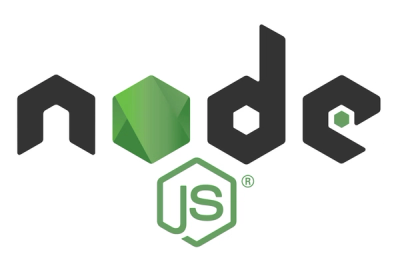
Security News
ECMAScript 2025 Finalized with Iterator Helpers, Set Methods, RegExp.escape, and More
ECMAScript 2025 introduces Iterator Helpers, Set methods, JSON modules, and more in its latest spec update approved by Ecma in June 2025.
d3-scale-cluster
Advanced tools
A custom D3 scale powered by a 1-dimensional clustering algorithm. Similar to quantile scales, the cluster scale maps a continuous input domain to a discrete range. The number of values in the output range determines the number of clusters that will be computed from the domain. The graphic below demonstrates how cluster compares to D3's quantile and quantize scales:

You can also check out the "Choropleth with d3-scale-cluster" block for an interactive comparison of cluster, quantile, and quantize scales.
Clusters are computed using a 1-dimensional clustering algorithm with an O(kn log(n)) runtime (where k is the number of clusters desired). This should be fast enough for the majority of data sets, but it's worth doing your own performance testing.
For more details on this project and the underlying clustering algorithm, please read this blog post on Medium: "Using clustering to create a new D3.js color scale"
For more direct access to the ckmeans algorithm (not as a D3 scale), check out ckmeans or its native sibling ckmeans-native.
Install the npm package
npm install --save d3-scale-cluster
Load the scale into your project
// Using ES6 imports
import scaleCluster from 'd3-scale-cluster';
// Or, using require
var scaleCluster = require('d3-scale-cluster');
<script> tagInclude the following script tag on your page after D3
<script src="https://unpkg.com/d3-scale-cluster@1.3.1/dist/d3-scale-cluster.min.js"></script>
Reference the scale directly from the d3 object
var scale = d3.scaleCluster();
This scale largely has the same API as d3.scaleQuantile (however we use clusters() instead of quantiles())
var scale = d3
.scaleCluster()
.domain([1, 2, 4, 5, 12, 43, 52, 123, 234, 1244])
.range(['#E5D6EA', '#C798D3', '#9E58AF', '#7F3391', '#581F66', '#30003A']);
var clusters = scale.clusters(); // [12, 43, 123, 234, 1244]
var color = scale(52); // '#9E58AF'
var extent = scale.invertExtent('#9E58AF'); // [43, 123]
d3.scaleCluster()
Constructs a new cluster scale with an empty domain and an empty range. The cluster scale is invalid until both a domain and range are specified.
cluster(value)
Given a value in the input domain, returns the corresponding value in the output range.
cluster.invertExtent(value)
Returns the extent of values in the domain [x0, x1] for the corresponding value in the range: the inverse of cluster. This method is useful for interaction, say to determine the value in the domain that corresponds to the pixel location under the mouse.
cluster.domain([domain])
If domain is specified, sets the domain of the quantile scale to the specified set of discrete numeric values. The array must not be empty, and must contain at least one numeric value; NaN, null and undefined values are ignored and not considered part of the sample population. If the elements in the given array are not numbers, they will be coerced to numbers. A copy of the input array is sorted and stored internally. If domain is not specified, returns the scale’s current domain.
cluster.range([range])
If range is specified, sets the discrete values in the range. The array must not be empty, and may contain any type of value. The number of values in (the cardinality, or length, of) the range array determines the number of clusters that are computed. If range is not specified, returns the current range.
cluster.clusters()
Returns the cluster thresholds. If the range contains n discrete values, the returned array will contain n - 1 thresholds. Values less than the first threshold are considered in the first cluster; values greater than or equal to the first threshold but less than the second threshold are in the second cluster, and so on.
cluster.copy()
Returns an exact copy of this scale. Changes to this scale will not affect the returned scale, and vice versa.
cluster.import()
Updates the scale with the result of a cluster.export() call. Useful for offloading computation into a webworker.
cluster.export()
Exports the internals of the scale as an object, for use with cluster.import(). Useful for offloading computation into a webworker.
For data sets of significant size, you may want to offload computation into a Web Worker so that it does not block the main thread. You can use cluster.import() and cluster.export() as follows:
worker.js
const scale = scaleCluster().domain(domain).range(range);
self.postMessage({scale: scale.export()});
Main thread
worker.onmessage = function (event) {
const scale = scaleCluster().import(event.data.scale);
};
Thanks to Haizhou Wang and Mingzhou Song for developing the original Ckmeans 1D clustering algorithm, and Tom MacWright for his previous work in bringing these techniques to the web.
npm install
npm run test # run tests
npm run build # build distributable file
npm run buildnpm version [major|minor|patch]git push origin --tagsnpm publishFAQs
D3 scale that clusters data into discrete groups
The npm package d3-scale-cluster receives a total of 691 weekly downloads. As such, d3-scale-cluster popularity was classified as not popular.
We found that d3-scale-cluster demonstrated a not healthy version release cadence and project activity because the last version was released a year ago. It has 1 open source maintainer collaborating on the project.
Did you know?

Socket for GitHub automatically highlights issues in each pull request and monitors the health of all your open source dependencies. Discover the contents of your packages and block harmful activity before you install or update your dependencies.

Security News
ECMAScript 2025 introduces Iterator Helpers, Set methods, JSON modules, and more in its latest spec update approved by Ecma in June 2025.

Security News
A new Node.js homepage button linking to paid support for EOL versions has sparked a heated discussion among contributors and the wider community.

Research
North Korean threat actors linked to the Contagious Interview campaign return with 35 new malicious npm packages using a stealthy multi-stage malware loader.